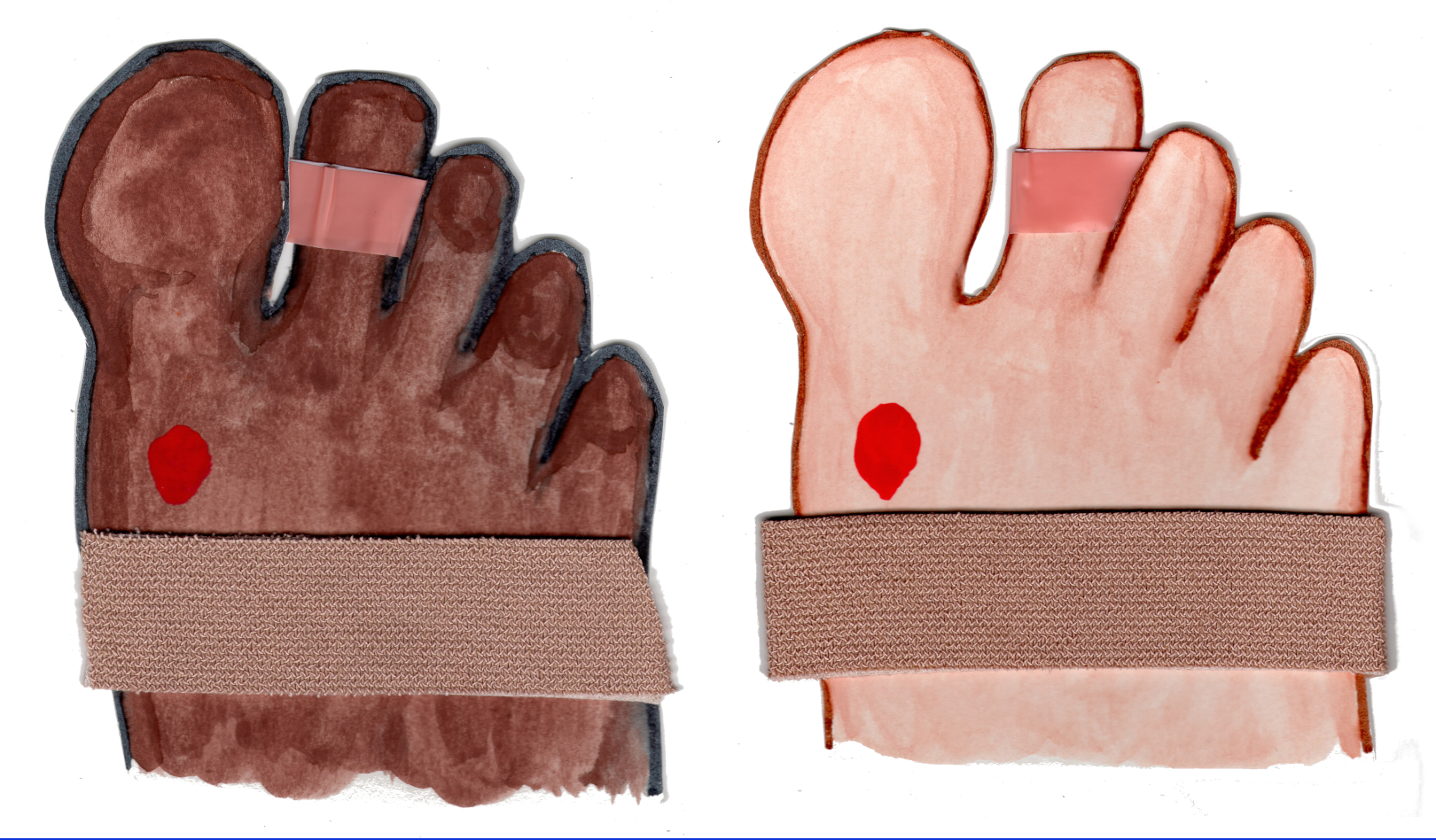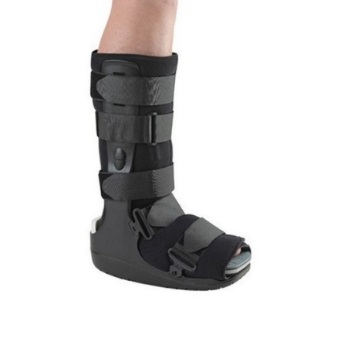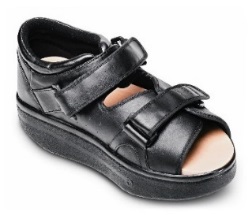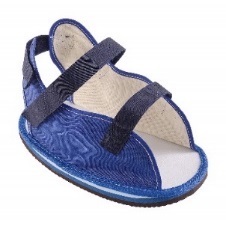Healing Feet, Avoiding Amputation

GitHub page
Reconstruct, Reestablishing an Intact Epithelium over the Entire Extremity
Thank you to Dr. Aimee Garcia, Dr. Delma Jara, Dr. Ana Macias, Dr. Cezarina Mindru, Dr. Maria Rodriguez-Barradas, and Dr. David Green for working together to create our local consensus approach to foot ulcer healing.
Provide proper OFFLOADING to ALL patients:
All patients should receive offloading footwear:
| item | image | recommentation |
|---|---|---|
| offloading boot (exs. DH Walker, CAM boot) |
 |
recommended / BEST |
| “healing sandal” |  |
acceptable in selected situations |
| cast shoe |  |
discouraged |
The Ossur® DH OffLoading Walker™ with customized offloading insert (or, if unavailable, another calf-length boot that does not allow flexion or extension at the ankle) should be provided for offloading. The Darco Wound Care Shoe System™ may be substituted only if the ulcer is on the dorsum of the foot or the dorsum of the toes.
Some patients should be evaluated for surgical forms of offloading. Specifically, gastrocnemius recession or tendon Achilles lengthening should be considered for all patients who cannot dorsiflex past neutral position (90° angle between foot and calf) or who are undergoing forefoot amputation.
Provide advanced contemporary wound care to ALL patients.
I have no relationships to industry – the producers of these or any other medical products. Items list are components of our consensus approach because of availability on our hospital formulary/inventory list.
| component | specific item(s) |
|---|---|
| first layer, infection present | cadexomer iodine gel (Iodosorb, Smith & Nephew) ± Mepitel® (Molnlycke Health Care) |
| Iodoflex or Iodoform (Smith & Nephew) | |
| SilvaSorb (Medline) gel | |
| Acticoat Flex 3 (Smith & Nephew) moistened with water, not saline | |
| Aquacell® Ag Extra (ConvaTec) | |
| Tritec™ Silver (Milliken / Medline) | |
| Hydroferra Blue® (Hollister) | |
| 0.125% sodium hypochlorite (Dakin’s) solution used twice daily for four days maximum | |
| first layer, uninfected | collagenase ointment (Santyl, Smith & Nephew; avoid CarraKlenz with use) |
| MediHoney® gel (DermaSciences) | |
| PluroGel® (Medline) | |
| Promogram™(Acelity) | |
| negative pressure wound therapy dressings (Acelity) | |
| second layer: absorbing fluid | 2x2” or 4x4” gauze ±ABD pad |
| Alleyvn foam (Smith & Nephew) | |
| third layer: holding it in place | cast padding + ACE elastic wrap with 2” paper tape |
| Mepilex® (Molnlycke Health Care) | |
| 2” paper tape or Medipore™ tape (3M) | |
| Tegaderm (3M) |
A simplified version for surgical trainees: generally
Iodosorb for Inpatients or Infection
and
cOllagenase for Outpatients or Uninfected Ulcers.
.
Generally NOT advised:
- use wet-to-dry dressings, as these permit continued bacterial growth, macerate surrounding skin, and perform non-selective, low-efficacy debridement. A randomized trial has reported a -50% reduction in wound area with collagenase vs. 0.8% increase with saline-moistened gauze .
- use undiluted Betadine solution, alcohol solution, bleach, or other cleaning materials not approved for wound care.
- use silk or rayon tape directly on skin or on dressings.
- use implants or grafts as an ulcer healing adjunct unless peripheral artery disease and osteomyelitis have been ruled out (as described above), there is no active soft tissue infection, and the area reduction of the ulcer has been documented as being less than 50% over a 4 weeks despite adequate offloading and advanced local wound care (as described above).
Evaluate for osteomyelitis with an x-ray ± magnetic resonance imaging (MRI) or biopsy for ALL patients.
ALL patients with a non-healing foot ulcer should have radiographic imaging to evaluate for osteomyelitis. This evaluation should begin with plain x-rays (ordered as toes, foot, or heel, depending on the area) done within the past 30 days. Magnetic resonance imaging, percutaneous image-guided bone biopsy or surgical biopsy should be considered in the following situations:
- cortical or trabecular bone is visible or palpable within the ulcer
- x-ray changes suggestive of osteomyelitis in an area contiguous with the ulcer
- erythrocyte sedimentation rate >55 mm/hr, C-reactive protein >44mg/mL, procalcitonin >0.33ng/mL, even if no clinical signs of soft tissue infection
- continued non-healing despite adequate arterial circulation, offloading, and wound care.
Urge complete abstinence from tobacco in ALL patients
Utilize freely-available local (“Veterans Kick Butts” counseling) and national smoking cessation resources (1-800-QUIT-NOW, www.smokefree.gov).
Ensure optimal medical management in ALL patients
Includes diabetes management that is largely concordant with recommendations from major U.S. medical societies. This should be done in conjunction with the patient’s primary care clinician or through a specialty medical clinic.
Equipment and supply lists for foot reconstruction operations:
open toe amputation and/or debridement only, no closure
1. chlorhexidine (Hibiclens) solution for skin preparation to the ankle, NOT iodine-povidine solution
2. mini bone OR minor instrument set, NOT the leg amputation instrument set please
3. methylene blue in a sterile cup, on the field
4. swabs x2 (for application of methylene blue on the field, not for microbiology specimen)
5. sterile specimen cups for microbiology specimen x1 open; another in the room
6. Versajet device in room
7. Versajet handpiece in room
8. 3L bag of normal saline in room
9. 4x4 gauze
10. Webril (cast padding), 4-inch width
11. ACE wrap, 4-inch width
delayed primary closure ± toe amputation
1. chlorhexidine (Hibiclens) solution for skin preparation to the ankle, NOT iodine-povidine solution
2. mini bone instrument set, NOT the leg amputation instrument set please
3. micro-oscillating saw with 10mm or 4.5mm blade
4. methylene blue in a sterile cup, on the field
5. swabs x2 (for application of methylene blue on the field, not for microbiology specimen) 6. sterile specimen cups for microbiology specimen x1 open; another in the room
7. Versajet device in room
8. Versajet handpiece in room
9. 3L bag of normal saline in room
10. two 2-0 Vicryl sutures on UR-6 needle
11. two 2-0 Vicryl sutures on CT1 needle
12. two 3-0 nylon on SH needle
13. 4x4 gauze
14. Webril (cast padding), 4-inch width
15. ACE wrap, 4-inch width
skin grafting
1. Chloraprep chlorhexidine (Hibiclens) solution (NOT iodine-povidine solution) for skin preparation of the entirety of the lower extremity
2. minor instrument set, NOT the leg amputation instrument set please
3. dermatome
4. dermatome blade
5. short plastic carrier
6. sterile mineral oil
7. sterile saline solution 8. methylene blue in a sterile cup, on the field
9. Versajet device in room
10. Versajet handpiece in room
11. 3L bag of normal saline in room
12. two 4-0 chromic sutures, preferably on PS-3 (small) needle
13. 4x4 gauze
14. Adaptec x1
15. Xeroform x1
16. two Tegaderm dressings, medium size
17. Webril (cast padding), 4-inch width
18. ACE wrap, 4-inch width
19. wound VAC
20. wound VAC black sponge, medium size
Surgical principles for foot reconstruction operations:
Smith and Nephews Versajet hydrosurgery system for most debridements / amputation procedures that will have delayed primary closure.
Early Post-Operative Management:
- Outpatient consult request for ECL wound care or podiatry for patients not previously seen by either team; or return to clinic request for persons previously seen by either team.
- Return to clinic telephone encounter at 1 week.
- Return to clinic face-to-face encounter at 6 weeks (for suture removal)
Further Outpatient Care:
1 week telephone encounter: to assess pain, early healing, and to review microbiology results, modify antibiotic regimen. 6 week face-to-face encounter:
The “graduation package” (when full re-epithelialization {healing} is achieved):
- Prosthetics consult for foot molding and custom orthotic shoe.
- Prosthetics consult for temperature sensing mat for secondary prevention of additional foot ulcers (ask staff surgeon).
- Return to clinic in another month to ensure durable wound healing, follow-up on above.